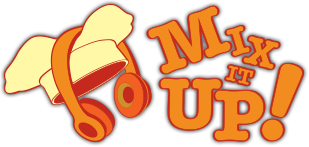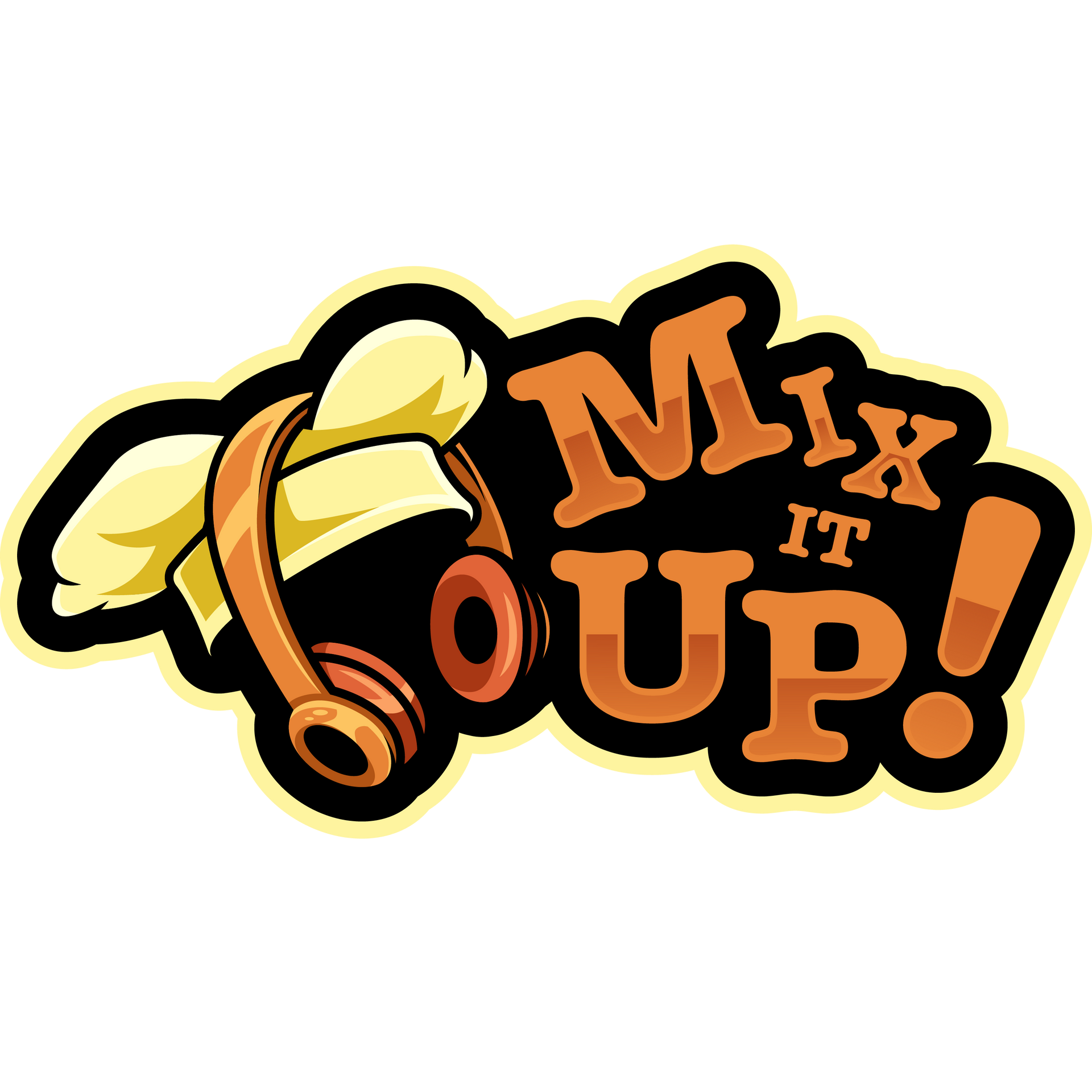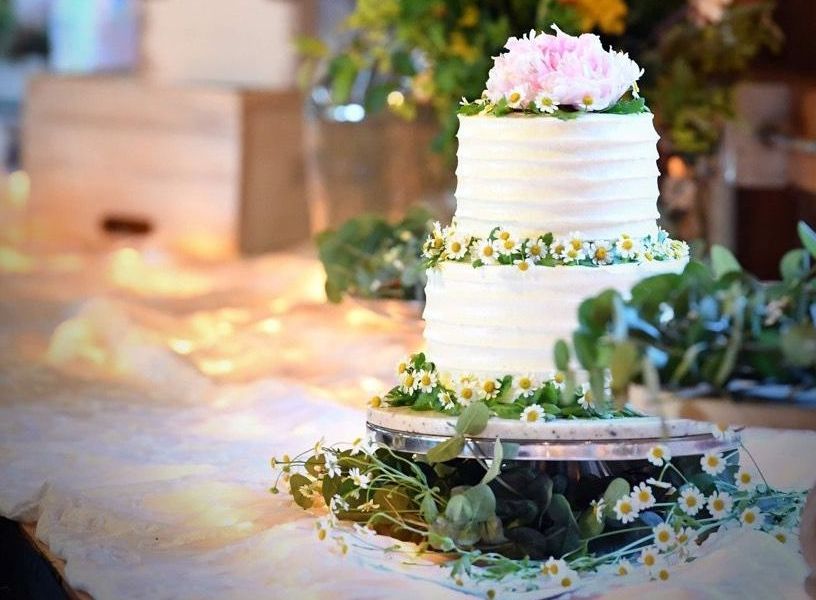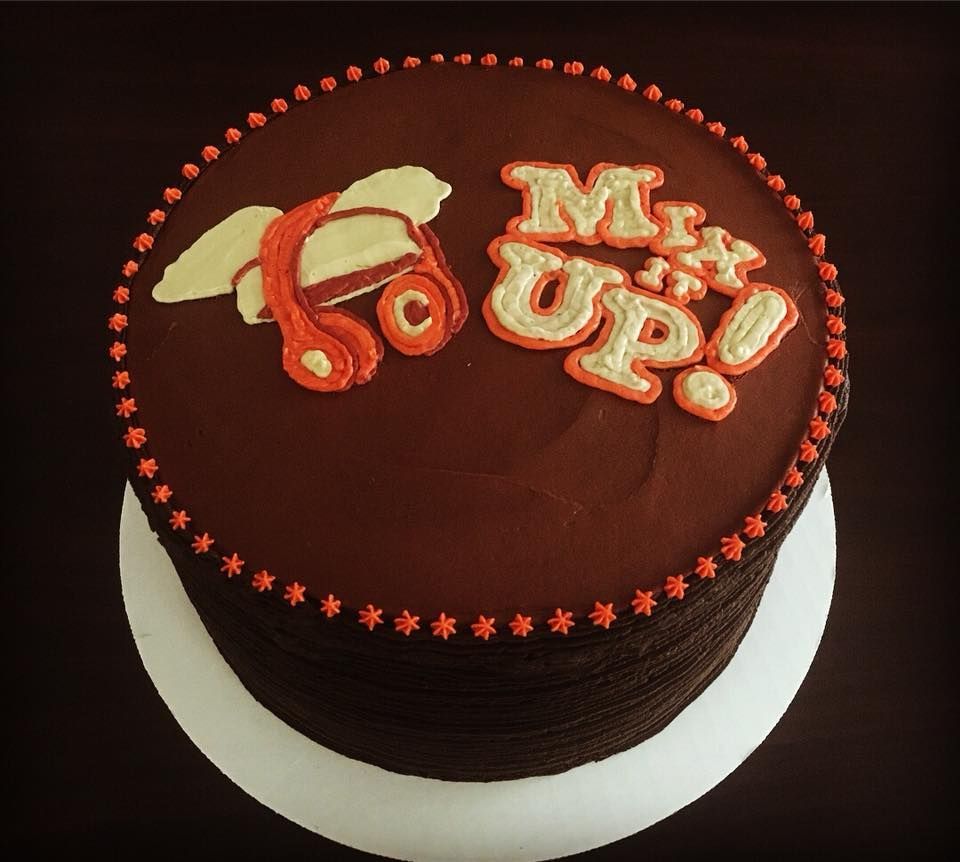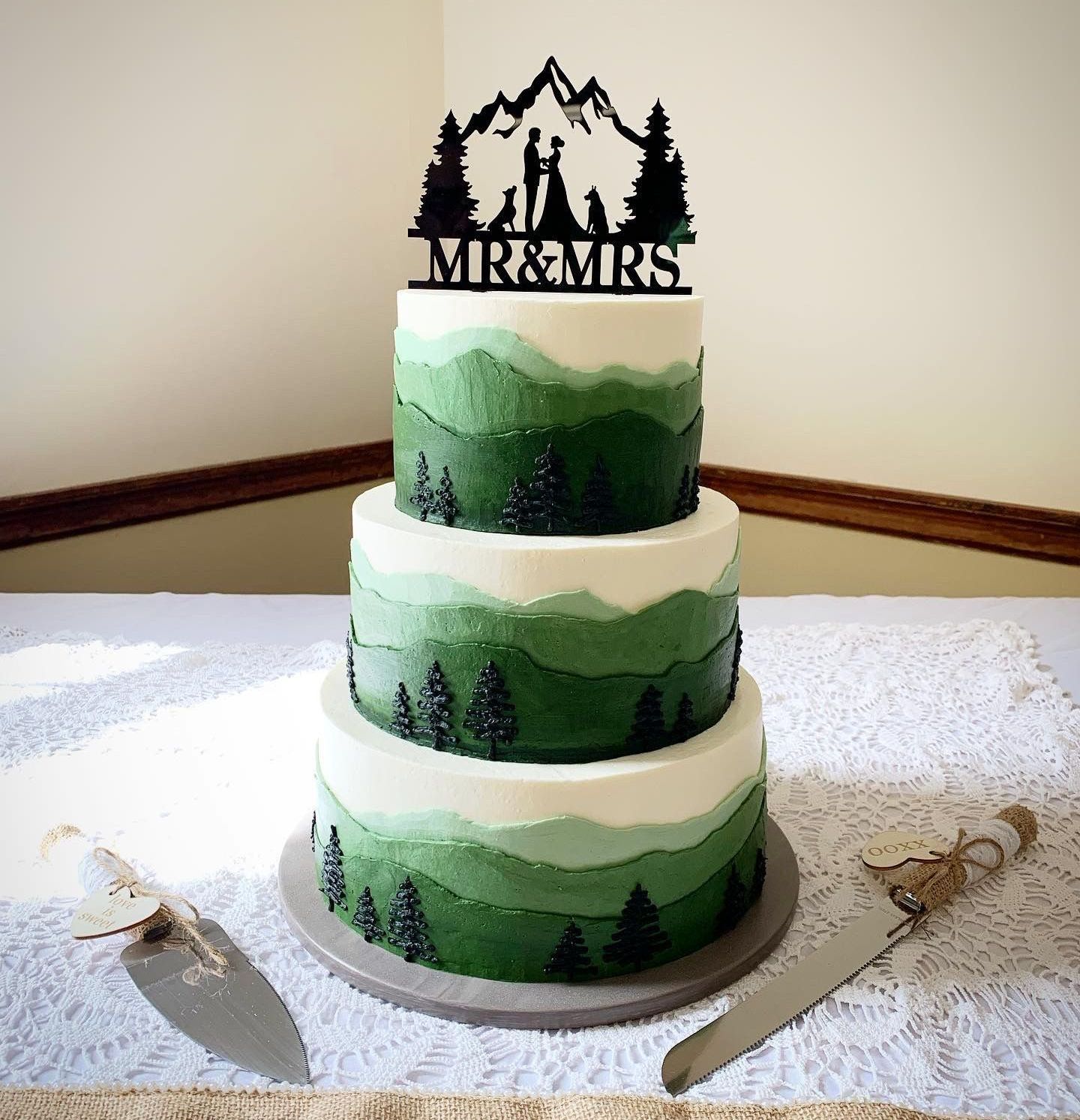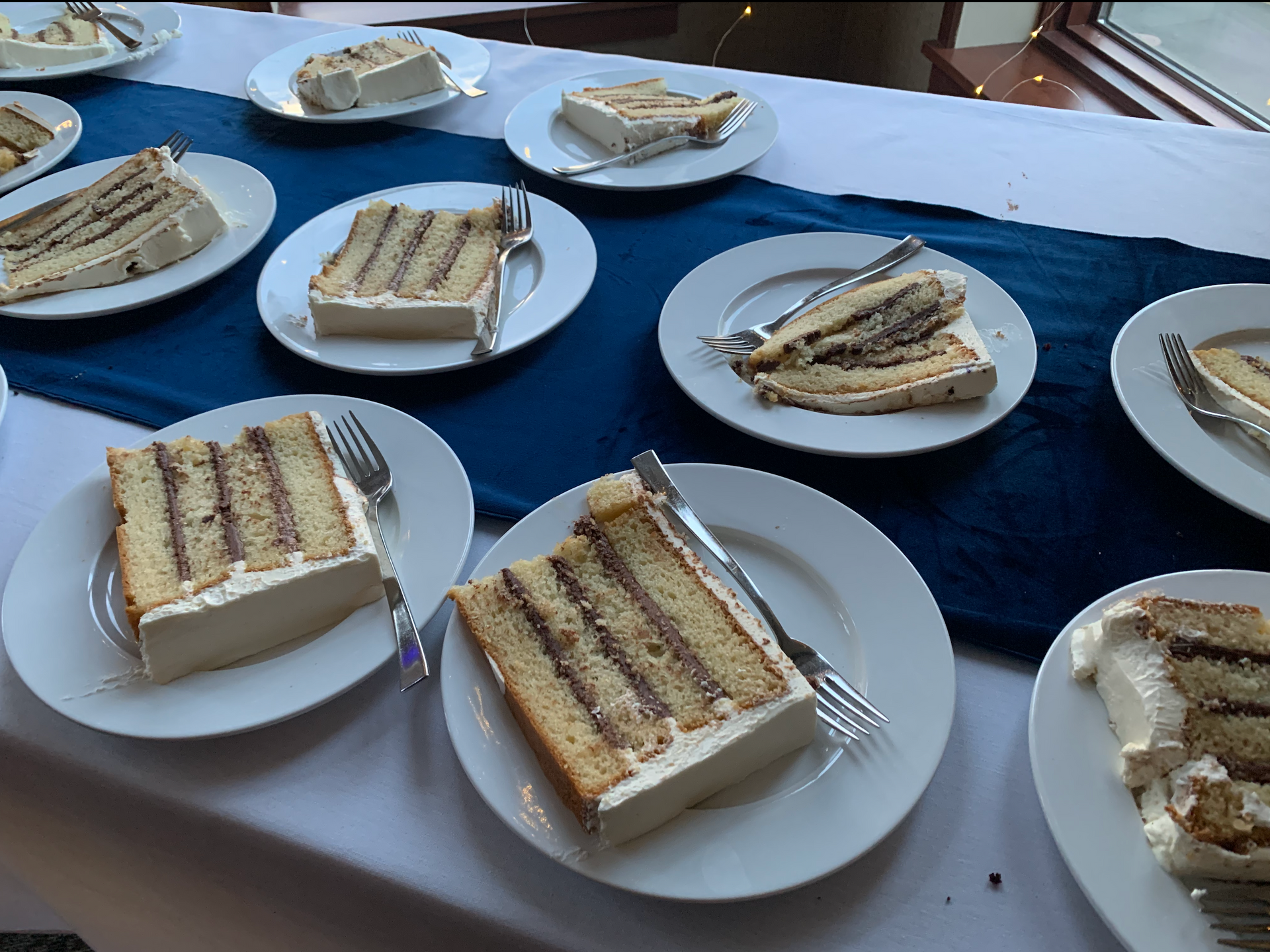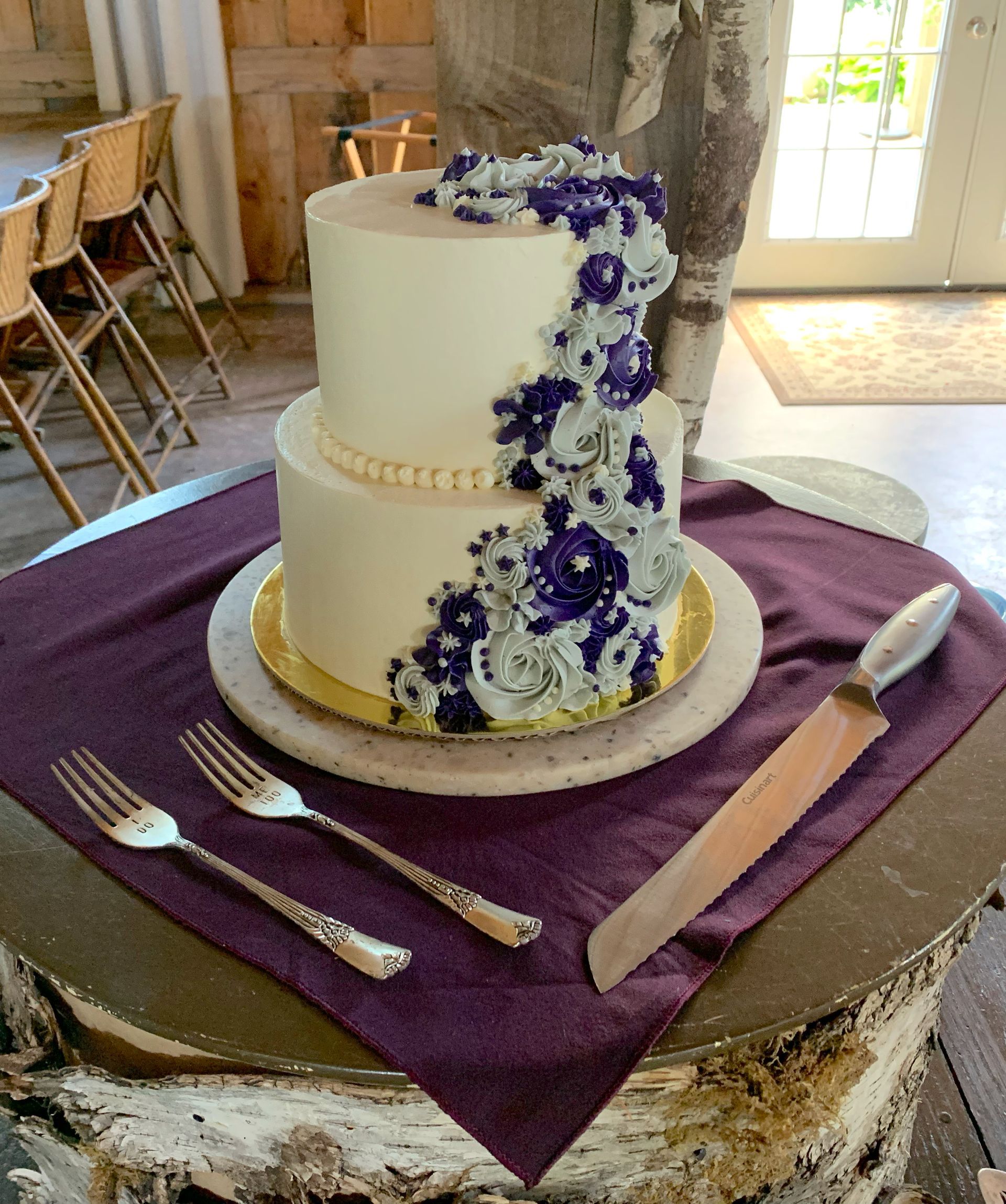A Guide To Ordering Cakes
Often when I receive an order for a cake, whether it's by phone or in writing, most customers do not realize all of the details I am looking for to fill their request. It is never as simple as hearing, "Can I order a cake?" and me answering with a simple "Yes", though I wish it were.
Even customers that have done a little online research to find a design they like are surprised by the varied questions I typically ask. Some of my questions are just to help me clarify what their finished product is intended to be so that I get it right. I do not want to leave anything to chance, or assume the customer wants their cake one way, while I make a decision they were not expecting when they receive their cake. As the idiom goes, "The devil is in the details."
Details are not just to make sure the cake received matches what the customer had intended, but the specifics of the cake will also determine if the cake is even possible, if there are any substitutions that may need to be made, to be sure there are no dietary issues to overcome, and will by nature of the business effect the overall cost of the final product.
My goal of this blog entry is to help you, the consumer, be better prepared to order a cake when you have an upcoming "cakeable event", or when you are just in the mood for cake. It does happen. Admit it. Now, I cannot promise this blog to be all-inclusive and cover every cake-related topic, nor can I promise it will work with every bakery, but it should give you some behind the scenes insight before you reach for your phone.
So we begin ..
When is it due?
How many guests?
What are your cake flavors?
Cake Flavors ..
As far as cost goes, the more simple the flavor choices (chocolate, vanilla, and white cake for instance) the less expensive the cake will most likely be. At least that is how I price out my cakes for customers. When you start requesting more specialized cakes the cost will start to increase due to the complexities involved in making the cake and to account for the additional ingredients that may be needed. Two examples that come to mind are carrot cake and maple cake.
The
carrot cake requires more spices, dicing up carrots and depending on the recipe followed, more gentle mixing by hand rather than a hand mixer or table top mixer. The recipe I use also requires a bit longer baking time which uses more electricity.
The
maple cake, to be true to real maple lovers, requires adding pure maple syrup. Being a proud Vermonter, I would take it one step further and add that
the only true maple syrup is
Pure Vermont Maple Syrup. This ingredient is a bit pricey at
$50.00 per gallon, but it is definitely worth it, and most certainly understandable once you realize
what it takes to create such an amazingly delicious product. (For those of you that think Pure Vermont Maple Syrup is too sweet, I'm ok with that as it leaves more for the rest of us; maple milk is fabulous!). Either way, you will want to be sure to ask your baker if they have different pricing based on the flavor of cake you desire.
Returning back to the cake flavors themselves, the options are nearly endless. If you can think of it, there is probably a recipe for it. White cake, Vanilla, Chocolate (and its own varieties), Yellow, Strawberry, Lemon, Lemon Poppyseed, Carrot, Marble, Pound Cake, Italian Cream Cake, Lemon-blueberry, and on and on. Honestly, this is one area where the customer looking around online for inspiration is certainly helpful, as there are just so many options these days.
Cake Fillings ..
The
first benefit is
it offers a better cake-to-filling ratio, both in moisture content and flavor. I do not know many people that enjoy eating a dry cake. If you ever watch a baking show, competition or otherwise, their judges will almost always comment on whether the cake is moist or too dry. The
filling helps improve the cake's moisture, even if the cake seems a bit dry after cooling from the oven. The cake will absorb some of the moisture from the filling and taste more fresh.
The combination of flavors will also be
more noticeable
with a better cake-to-filling ration. Too little filling might be overwhelmed by the cake flavors and the taste of the filling will be lost. You want the two flavors to compliment each other. Help the taste
find its way back by not skimping on the use of filling.
The
second benefit to
the filling is keeping the cake together. I know that sounds a bit silly, but when you stack one layer of cake onto another, you want them to stay in place, especially if you have to transport them a distance greater than from your countertop to the kitchen table. Fillings can act like and edible glue, as awful as that might sound. Admit it though, I am sure you know some classmates that ate paste or glue back in your early years of schooling. I do .. but it wasn't me. Really, it wasn't. I promise.
Anyway, some fillings, like buttercream become hardened when set in the refrigerator for an hour.
This will help stabilize the cake so it does not shift when bringing it to your venue.
NOTE
.. This
does not mean
you can still tilt or tip the cake box all willy-nilly! Don't go passing the box around like a rugby ball. You still need to do your best to keep the cake box level and prevent jarring movements during transport. No jackrabbit starts or evasive, last minute breaking in your vehicle. (This can be quite the challenge for rural areas or streets in poor condition. Trust me, I know).
However, a key note to remember is that you will want to take the cake out of the fridge about two hours before your event so it has time to come to room temperature (68 to 72 degrees, on average) and the buttercream to soften just a little. (Having said that, my wife actually likes the texture of hardened buttercream frosting / filling as it melts in your mouth while you eat it; you can't please everyone).
Outer Decorative Layer ..
Throughout this blog entry, I have tried to include cake images with a variety of exterior design options. You will certainly see more if you go back through my website
Gallery. The outer, decorative layer is typically one area that rarely has an effect on the cake's overall pricing (with few exceptions), despite the variety of finishes available, at least as far as my pricing goes.
If you scroll back to the top to view
the main image, you will see what is referred to as a
"Naked" cake. As risqué as this might sound, it simply means there is a minimal amount of frosting applied to the outside of the cake. In fact, there is
so little frosting you can see the cake through the thin layer of frosting. Often there is just enough frosting to consider this just a "crumb-coat" layer, which is as it sounds .. a layer to keep the crumbs in and not fall all around creating an unsightly mess. The crumb-coat layer is also used as the primary layer of frosting before the decorative layer is applied so that none of the crumbs come out during the final spreading of frosting and ruin the pristine image for all to see. Though not as visible, the image with the raspberry filling being piped onto the layer of chocolate cake has a ring of buttercream frosting along the perimeter, creating a dam to keep the raspberry filling from squishing outward as more cake layers are applied. This is key if you want a clean, white frosting exterior, whether having a naked cake or one with a complete frosting exterior.
The
second image was a 2-tiered wedding cake with a vanilla buttercream frosting and a
fluted design. Some might also refer to this design as a scalloped design. Some customers prefer a symmetrical finish while others lean more toward a rustic or natural fluted look. The flowers are real flowers supplied by the florist as requested by the wedding couple that ordered the cake, and the cake sits atop a Corian cake board base (which is something I offer as an added fee if the customer wishes to keep the base as a cutting board or keepsake).
The
third image down shows a single tier, 4-layered cake with chocolate buttercream in a
smooth finish and decorated on top with my business logo. This particular cake was donated to a local fundraising event, and was a chocolate cake with a chocolate filling.
The
fourth image is a 3-tiered wedding cake, with 4-layers per tier and has a
green mountain design
over a vanilla buttercream base layer of frosting. The cake topper was provided by the wedding couple. As a side note, I do
not typically transport a multi-tiered cake simply out of fear that something may happen along transit to the venue. Given questionable road conditions, animals darting out into the roadway or simply other drivers acting erratically, I hesitate to take that chance. Too much work goes into a cake like the mountain scene that I would rather not risk it. So, I will often
transport the multi-tiered cakes in separate boxes and assemble them on site, finishing the details on the day of the event at the venue.
Other Features ..
Although I may have briefly mentioned some details earlier, I will use this section to cover other important features of cakes.
Dietary restrictions is the most important specialty feature of them all, primarily because of the safety factor involved. Personally knowing someone with celiac disease, even the smallest amount of gluten in a food product can have devastating effects. I have seen it. Knowing what it can do to someone makes it that much more important to be sure your ingredients contain NO gluten and your surface areas are disinfected before working on a gluten-free cake. You must take special precautions. Some allergies could be life-threatening like peanut allergies. Nothing will ruin a celebration like sending someone to the hospital. Bakers (and caterers for that matter) must be made aware of any potential allergen concerns before they accept a food order.
Just as an example, one birthday cake I made needed to be gluten-free, dairy free, egg free and peanut free. It was one of the most challenging cakes I had ever made. There were a bunch of substitutions needed for ingredients when making that cake. It worked and they were pleased with its outcome. Fortunately for me, that child has since grown out of their adverse reactions to those ingredients and they are now able to eat cakes without restrictions!
How about
mixing and matching. I don't think I have touched on that, yet. In this feature, speaking for myself and not for other bakeries, I offer customers wanting a multi-tiered cake the option of each tier being its own flavor combination. For example, if they want a 6-inch top tier and an 8-inch bottom tier (which is pretty common), their top tier could be a vanilla cake with vanilla buttercream frosting for the filling, while their bottom tier could be a chocolate cake with a chocolate buttercream filling and vanilla buttercream for the outer decoration covering the entire cake. This example would fall under one fee for the entire cake.
However, the customer could also ask for a lemon cake with raspberry filling on the top and a chocolate cake with chocolate buttercream filling on the bottom with the entire cake decorated with vanilla buttercream. In this example each tier would be charged different rates due to their varied ingredients, the top requiring specialty ingredients while the bottom more common ingredients. This of course would all be explained prior to the customer finalizing the purchase.
Accessories
are another feature to consider. These are the added decorations someone might want on their cake, like a
cake topper, flowers, or other items. Personally, I ask the customer to purchase these items on their own and have them set aside on the cake table waiting for me when I arrive. This way, they have the exact item they were looking for rather than me ordering it and potentially getting the wrong one. In addition, if I order it, I am sure to notify the customer that the cost of that add-on will increase the cost of the cake, based on what I paid for the item. I do not add a surcharge.
One accessory in particular that I recently started offering customers, whether wedding cakes or otherwise, is a
Corian-made cake board base. If requested far enough in advance, the customer could even ask for a specific color made by Corian. If not, they can purchase one of the few I preorder, which are typically a gray or sand color, to keep them neutral. The cost I add is the cost I pay for them. I do not mark them up for profit. The nice thing about Corian cake boards is after you are done with the cake, you can use them in your kitchen as cutting boards or serving boards for snacks during a party, they are dishwasher safe and you can even sand out the scratches if you so choose. Plus, the design on each side of the board is slightly different giving you a couple options for display.
Another feature, or at least detail, is
special decorating requests, like the
green mountains scene. One other wedding cake I made included
dog paw prints ascending two sides of their cake to represent each of their family dogs. Each set of prints was colored to match their wedding colors. A different cake required me to purchase
edible gold leaf as a special feature. Gold leaf is
extremely fragile and highly responsive to static cling making it super difficult to apply to the cake. There is an added fee for adding and working with gold leaf.
Price ..
I hope I have covered the majority of key points related to pricing throughout my examples above. The only way to truly know is for you and your baker to be specific about your details and be clear about the associated fees. I do my best to be upfront about my pricing with customers, whether cakes, cupcakes, delivery charges, added features, and so forth. I do not want my customers to be surprised when they see the bill after the cake has been made and delivered. They should be completely aware before the creation of their product is underway.
In short .. (too late, I know) ..
There are so many variations and ideas out there, there is no way for me to cover them all. In this case, I hope you take some time and do some research and have your ideas written down ready to mention them to your baker, with photo examples if possible to send them if requested.
Here is a summarized list of questions you should consider before calling your bakery:
Is your baker
available on the date in question?
How many guests
are you expecting (or how many servings
will you need)?
Do you have
any dietary restrictions that you are aware of?
Do you have a particular
cake (decoration) ideas in mind? (include image if possible)
What
flavor of cake would you like? If more than one tier or one cake, do you want more than one flavor?
What
flavor of filling would you like? If more than tier or cake, do you want a different filling for each cake?
Are you planning on
using a cake topper?
Flowers? If so,
who is providing them?
(For wedding cakes) Are you planning on keeping the top tier for your First Anniversary? (I forgot to mention this option earlier when considering number of servings)
(For cupcakes) Are you planning on using cupcake toppers? if so, who is providing them?
Would you like to add a Corian cake board base to keep? (Likely a Mix It Up! specific option)
Although a bit lengthy, I hope this provides you with some assistance when getting ready for your next celebration. Whether you hire my services or your local bakery, my goal is to help you be a better prepared consumer.
Thank you for visiting!
DJ
